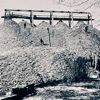
VIMS Professor Roger Mann and colleagues explore the ability of oyster reefs to buffer the increasing acidity of ocean waters.

VIMS Professor Roger Mann and colleagues explore the ability of oyster reefs to buffer the increasing acidity of ocean waters.
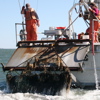
Winter dredge survey of the bay-wide blue crab population shows a mixed bag of good and not-so-good news that may result in a slight tightening of commercial harvest restrictions.
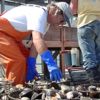
A new 5-year grant from the National Science Foundation will jumpstart an industry-university partnership to promote sustainable fisheries throughout the Mid-Atlantic and Gulf coast region.
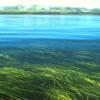
Professors Robert “JJ” Orth and Ken Moore are funded to work with Danish colleagues in an effort to develop innovative techniques and tools for eelgrass restoration.
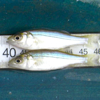
VIMS survey records low numbers of young-of-year stripers; scientists say drop likely reflects natural variability.
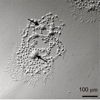
Knowledge of complex life history of Hematodinium may help watermen and growers curtail spread of disease.
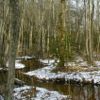
A 3-year grant from the U.S. Environmental Protection Agency will allow VIMS researchers to help localities protect the headwater wetlands that keep pollutants and excess nutrients from entering Bay tributaries.
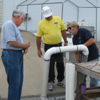
A recent gathering of “Master Oyster Gardeners” is the latest chapter in a fruitful partnership between VIMS scientists and members of the Tidewater Oyster Gardeners Association, or TOGA.
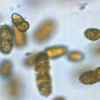
Algal blooms have appeared earlier and across a wider area of lower Chesapeake Bay this summer, likely due to last winter’s warmth and the current heat.
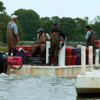
Report shows Virginia’s oyster aquaculture industry is growing steadily despite the struggling economy and some setbacks in hatchery production.
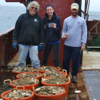
The high levels of scallop “seed” should generate significant commercial catches in three years, when the scallops are five years old.

VIMS' winter dredge survey shows that Chesapeake Bay’s blue crab population is at its highest level since 1993 following 4 years of a baywide stock-rebuilding program.
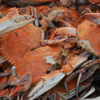
A new partnership between Virginia Sea Grant, VIMS, and the College of W&M explores whether a community-supported fishery can promote greater consumption of locally harvested fish and shellfish.
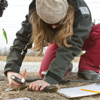
The Virginia Game Fish Tagging Program recognizes volunteer anglers for the greatest tagged and recaptured counts in 12 different categories.

VIMS partners with the Fly Fishers of Virginia and Dominion Power to help rehabilitate disabled veterans through a unique program called Project Healing Waters.

Local oyster growers learn how ocean acidification may affect their operations, and how they could best respond.
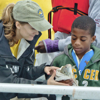
Marine recreation specialist Susanna Musick helps youngsters tag fish during annual youth-focused fishing event.

VIMS professor Bob Diaz is part of a nationwide team that recently received a three-year, $12M grant to study the effects of the Deepwater Horizon oil spill on the Gulf and its marine life.
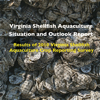
A new report from VIMS and Virginia Sea Grant shows the Commonwealth’s oyster aquaculture industry is poised to begin its biggest growth spurt ever.
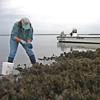
Development of disease resistance among Chesapeake Bay oysters calls for a shift in oyster-restoration strategies within the Bay and its tributaries.
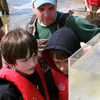
CBNERR program allows visiting middle school students to learn while getting wet and muddy in Chesapeake Bay.

VIMS' winter dredge survey shows that Chesapeake Bay’s blue crab population is at its second highest level since 1997 and well above the target for the third year in a row.
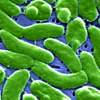
Local oyster growers and VIMS researchers find that moving farmed oysters into saltier waters just prior to harvest nearly eliminates the presence of a bacterium that can sicken humans.
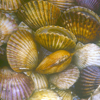
VA scallop industry provides $1.7 M to VIMS to help monitor stocks of this commercially important species.
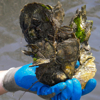
A new study co-authored by VIMS professor Mark Luckenbach shows that decline of oyster reefs is not confined to Chesapeake Bay.

A new VIMS study of local sea-level trends brings both good and bad news to localities concerned with coastal inundation.
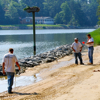
VIMS and Longwood University's Hull Springs Farm will partner to restore wetlands, stream buffers, and streams.
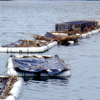
The VIMS Marine Extension Program will accept applications for the Virginia Fishery Resource Grant Program until 5:00 p.m. on January 14, 2011.

Report estimates total, "water-to-table" losses of $30.1 million as imports of Gulf oysters dry up.
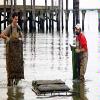
Sales of Virginian-grown shellfish show mixed response to the slowing economy. Plantings and projections of Virginia's oysters and clams were also mixed in 2009.

VIMS researchers and alumni are helping to craft the nation's immediate and long-term scientific responses to the Gulf oil spill.

VIMS winter dredge survey shows a 60% increase in Chesapeake Bay's blue crabs since last year, reaching the highest level measured since 1997.
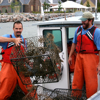
Out-of-work commercial watermen pulled up more than 9,000 derelict "ghost pots" from Chesapeake Bay and its tributaries during the second year of Virginia's landmark Marine Debris Removal Program.

A recently published VIMS study suggests that filter feeding by Atlantic menhaden has little net effect on overall water quality in Chesapeake Bay.
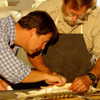
Decades of work by VIMS researchers has laid the foundation for construction of a spawning reef for Atlantic sturgeon in the James River.

The Lynnhaven River Oyster Restoration Team is honored for innovative efforts to restore the river's oyster population.
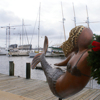
The Waterside and Nauticus marinas in Norfolk have been awarded Clean Marina status through partnership with the River Stars Program.
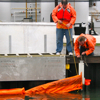
Oil-spill exercise on the York River helps emergency-management teams better coordinate their responses to such an event.

VIMS alum Charles Natale says pending approval of the "Cape Wind" project in Massachusetts is likely to jumpstart development of other wind farms in the nation's coastal waters, including those off Virginia.

VIMS recognizes Marine Corps Base Quantico as Virginia's 63rd certified Clean Marina in recognition of its environmental stewardship.
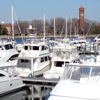
A survey of recreational boat owners who make Hampton their home port concludes that these boaters bring $55 million to the city and help create nearly 700 full-time jobs.

A survey by researchers with the Sea Grant program at VIMS shows that shellfish farmers planted more than half a billion clams and 18 million oysters in Virginia waters last year. The annual survey, which began three years ago, marks the first effort to track economic trends in shellfish aquaculture in the Commonwealth.
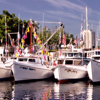
Sea Grant programs in the Mid-Atlantic region continue an annual tradition by hosting the latest edition of the Delmarva Charter Boat Workshop, on Thursday, April 20, 2006 from 9 a.m. to 3 p.m. This year's workshop will take place at Harrison's Harbor Watch Restaurant in Ocean City, Maryland.